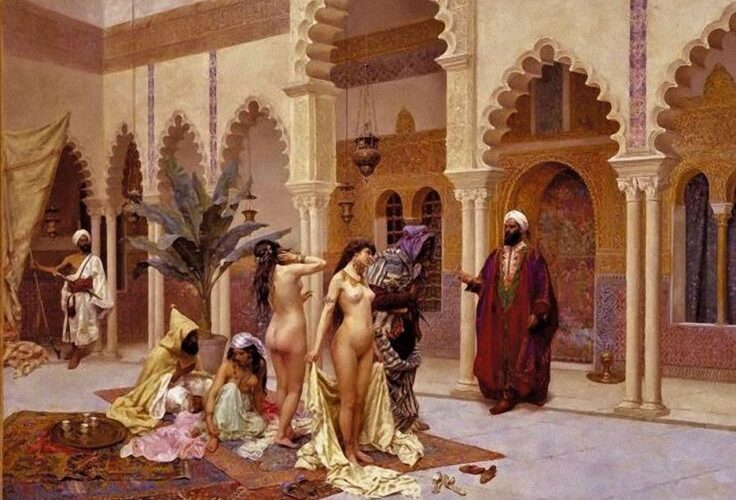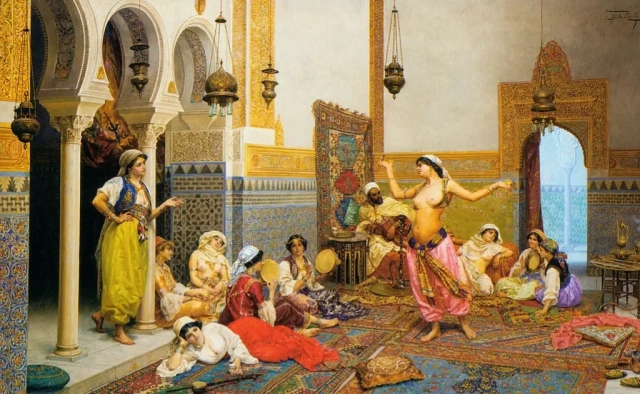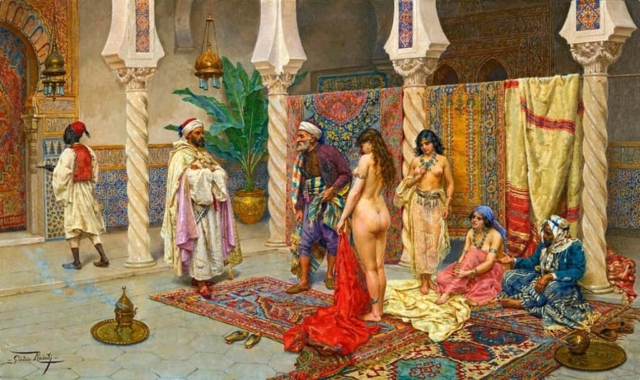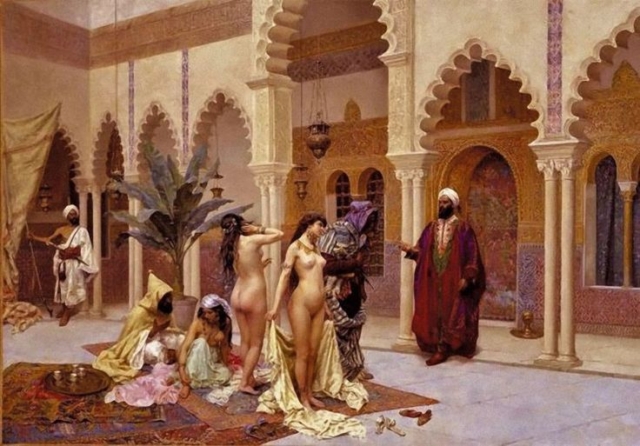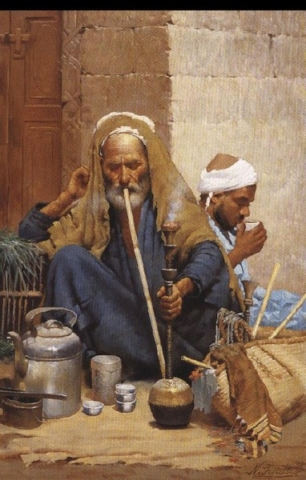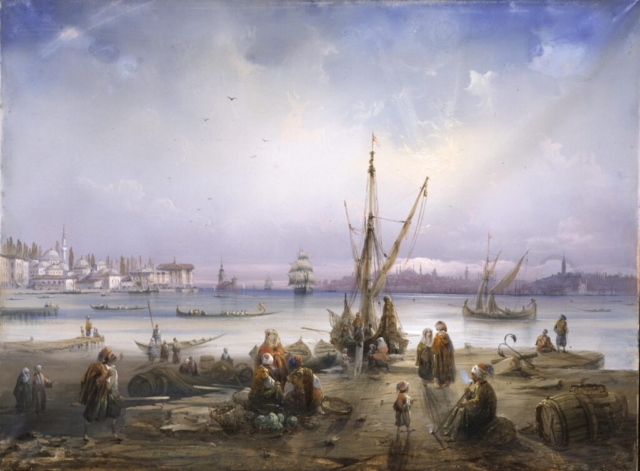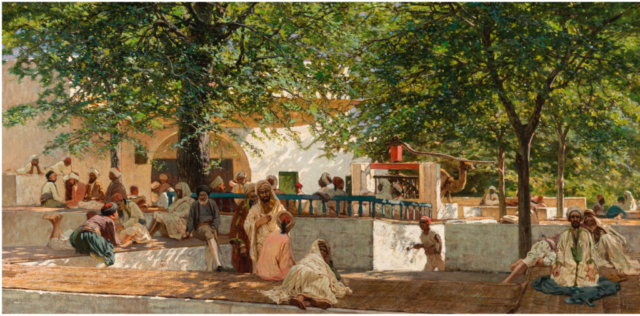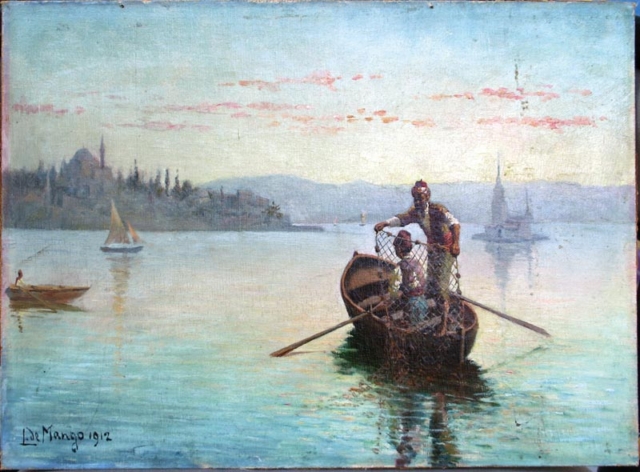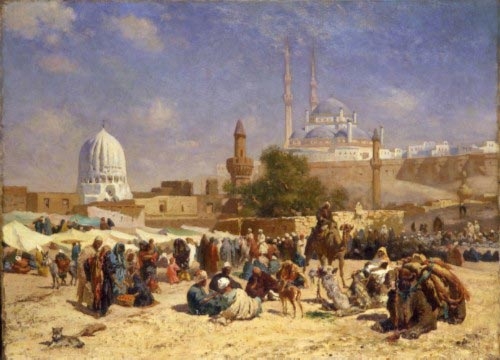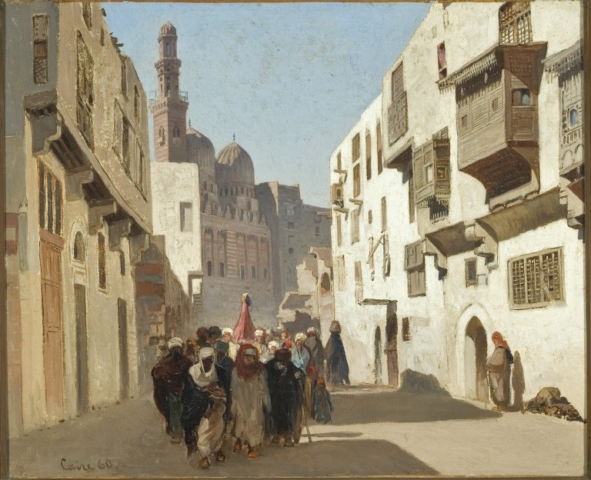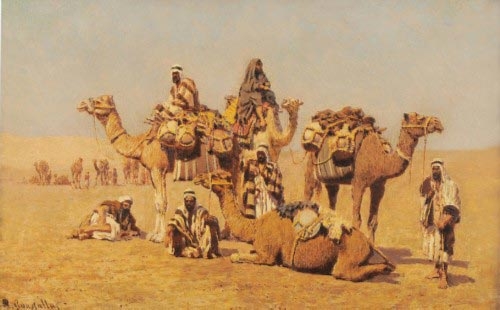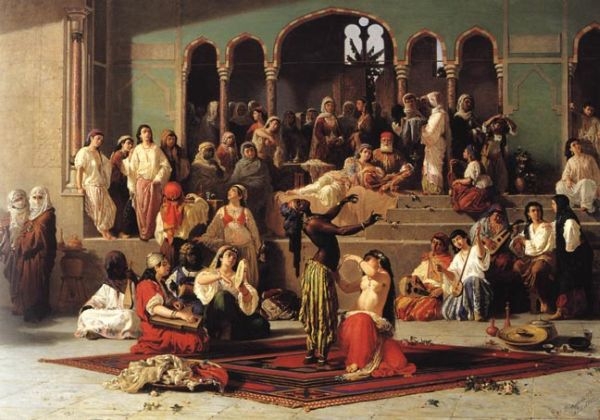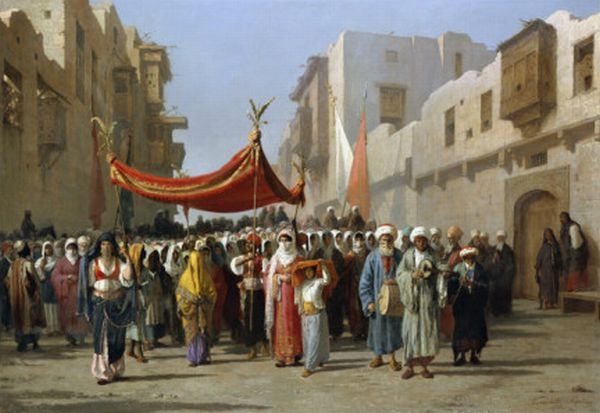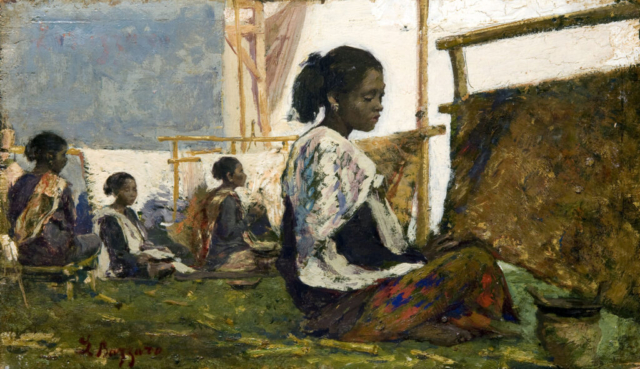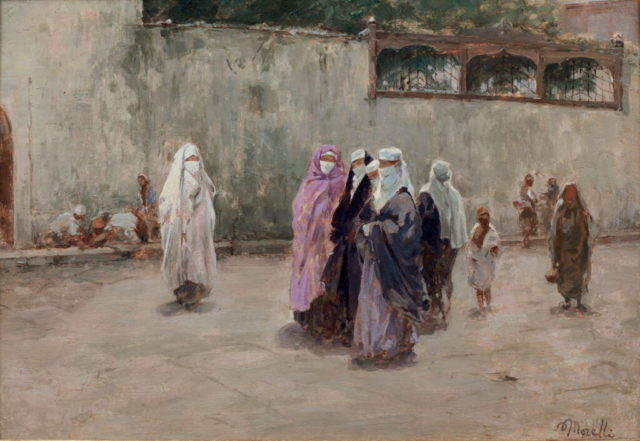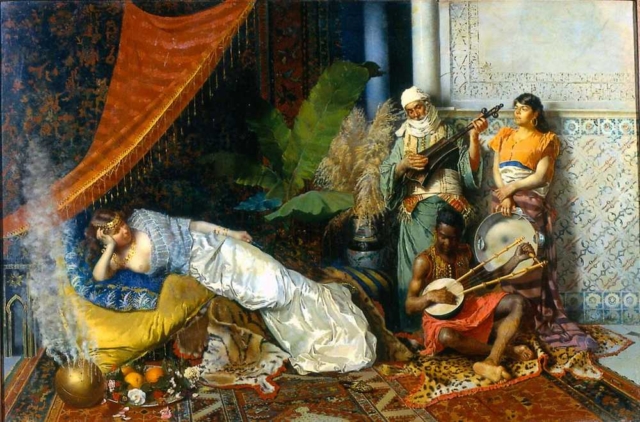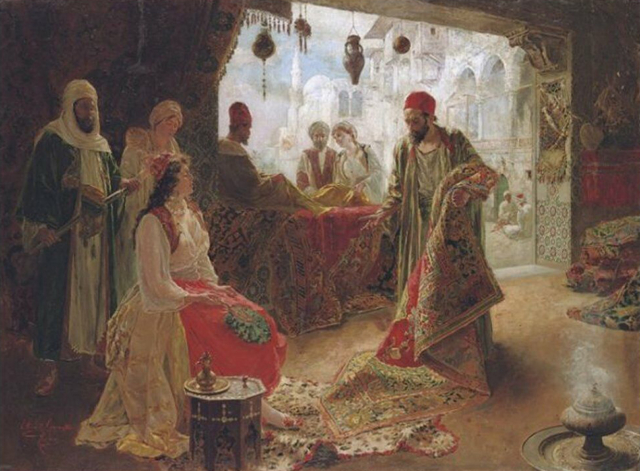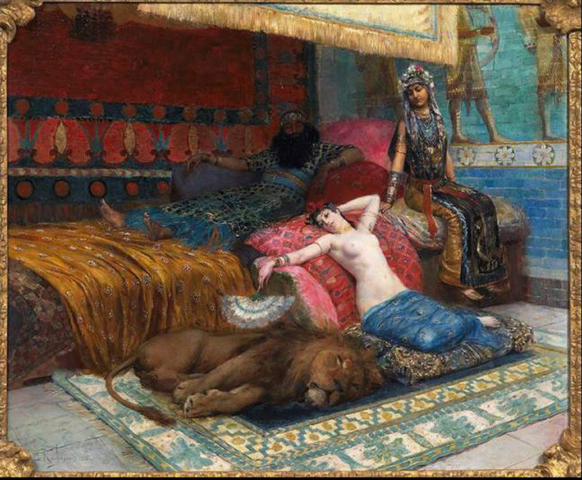In the fabric of art history, there are strands that, like hidden gold threads in a weave, await discovery and appreciation. Orientalist painting is one of these: a genre that, while never forming a unified movement, has woven a visual narrative that deeply influenced the European perception of distant and mysterious lands.
This artistic genre came to life at the end of the eighteenth century, a period when Europe was expanding beyond its borders with insatiable curiosity. The military expedition to Egypt in 1798, initiated by Napoleon, was not only a conquest of lands but also of knowledge. With the troops traveled curious minds and keen eyes: explorers, botanists, zoologists, archaeologists, and artists, all engaged in a collective work of documentation and study.
It was in this fertile ground that Orientalist painting sprouted, a genre fueled by romanticism and a burning desire for the exotic and esoteric. These artists, through their canvases, took the observer on a sensory journey, away from bourgeois conventions, to places imbued with veiled sensuality and mystery.
There was no uniformity in this genre; rather, it was a kaleidoscope of styles and approaches. Some artists were faithful to Romantic thought or Impressionism, others still tied to academic tradition, all united by the desire to represent the unknown. And so, alongside those who actually trod those distant lands, there were artists who, like the writer Emilio Salgari, remained anchored in their studios, painting distant worlds inspired by travelers’ tales.
The audience of the time, hungry for novelty and escapes from daily reality, enthusiastically welcomed these works, which became almost visual documentaries, windows onto worlds that most would only know through the canvas of imagination.
The breadth and duration of this artistic phenomenon are such that any attempt at cataloging is inevitably partial. However, even a taste, a limited selection of works, can ignite the spark of more in-depth research, inviting enthusiasts to further explore this fascinating strand of painting. For now, we leave aside the contribution of Orientalist photographers, which deserves its own reflection, to focus on the brushstrokes that painted a cultural bridge between Europe and the East.
Each painting, each scene, is a silent dialogue between the artist and his subject, an invitation to travel beyond the boundaries of the known, to discover the beauty and complexity of cultures different from one’s own. And in this journey, Orientalist painting reveals itself not just as an artistic genre, but as a fundamental chapter in the history of intercultural dialogue.

